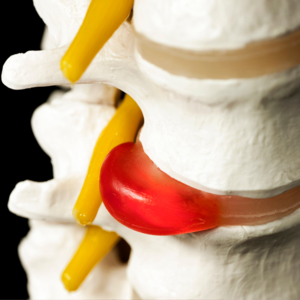
What is Sciatica?
If you've ever felt a sharp, shooting pain radiating down your lower back, through your buttocks, and into your leg, you may be dealing with sciatica. It’s a common condition, but it can be incredibly disruptive to your daily life.
As an experienced chiropractor, I’ve worked with countless patients from professional athletes to daily desk workers dealing with sciatica, and I know how frustrating it can be when pain limits your mobility, keeps you up at night, or makes even simple tasks like getting out of your car seem impossible.
In this blog, We’ll break down
- What is Sciatica
- Common Causes of Sciatica
- Stretches For Relief
- Exercises For Rehab
- Nutrition For Recovery
- Therapies For Professional Treatment
Please be aware that this blog is intended for educational purposes for you to have a better understanding of how the body works. The symptoms discussed here are very common but in some cases they can be the signs of something much more serious. If you are experiencing any symptoms, it should be evaluated by a healthcare professional before starting any type of treatment or rehabilitation program.
The Two Types of Sciatica: Discogenic vs. Piriformis Syndrome
Sciatica comes in two common forms. While the symptoms may seem similar, the underlying causes can vary significantly - which means the ways to relieve it vary too.
Let’s take a closer look at the two main types of sciatica.
Discogenic Sciatica

This type of sciatica is the most common and is caused by a problem with the discs in your spine. Think of your spinal discs as little cushions that sit between your vertebrae keeping your spine flexible.
When a disc becomes herniated or degenerates, it can press on the sciatic nerve, leading to the classic pain, numbness, or tingling associated with sciatica.
Patients with discogenic sciatica often experience:
- Pain that worsens when sitting or bending forward.
- Symptoms that may extend all the way to the foot.
- Occasional muscle weakness in the leg or foot.
Piriformis Syndrome

Piriormis syndrome, on the other hand, is a less common but equally painful cause of sciatica.
This condition occurs when the piriformis muscle—located deep in your buttock—becomes tight or spasms, irritating the sciatic nerve as it passes beneath (or, in some cases, through) the muscle.
Key signs of piriformis syndrome include:
- Pain that’s concentrated in the buttock and upper thigh.
- Symptoms that often worsen after prolonged sitting or activity.
- Tenderness in the buttock when pressure is applied.
Both types of sciatica can disrupt your life, but the treatments for each differ. That’s why it’s essential to identify the root cause of your sciatica before jumping into a treatment plan. As a chiropractor, my job is to help you determine whether your pain is stemming from your spine, your muscles, or both, and tailor a solution that gets you back to feeling your best.
Stretches to Relieve Sciatica Pain and Promote Healing
Stretching is one of the most effective ways to manage sciatica pain for short term relief, whether it’s caused by a herniated disc or piriformis syndrome.
Gentle, targeted stretches help release tension in the muscles, improve flexibility, and reduce pressure on the sciatic nerve. Here are some chiropractor-recommended stretches you can do at home to relieve discomfort and support your recovery.
1. Seated Piriformis Stretch
This stretch targets the piriformis muscle, a common culprit in sciatic nerve irritation.
How to do it:
- Sit on the floor or a sturdy chair with your feet flat and your back straight.
- Cross your right ankle over your left knee, creating a figure-four shape.Gently lean forward, keeping your spine straight, until you feel a stretch in your right hip and buttock.
- Hold for 20–30 seconds, then switch sides.
Pro tip: Keep the motion slow and controlled—don’t force the stretch. If you feel sharp pain, stop immediately.
2. Child’s Pose

Child’s Pose is a gentle yoga pose that helps decompress the lumbar spine and relieve tension in the lower back.
How to do it:
- Begin on your hands and knees in a tabletop position.
- Slowly lower your hips back toward your heels, extending your arms forward on the floor.
- Rest your forehead on the mat and breathe deeply, feeling a gentle stretch in your lower back and hips.
- Hold for 30–60 seconds.
Pro tip: If you need extra support, place a cushion under your hips or knees.
3. Hamstring Stretch

Tight hamstrings can pull on the lower back, increasing tension and pain. Stretching them helps reduce this strain.
How to do it:
- Lie on your back with one leg bent and the other extended.
- Loop a towel or resistance band around the arch of your extended foot.
- Gently pull the leg toward you, keeping it as straight as possible, until you feel a stretch in the back of your thigh.
- Hold for 20–30 seconds, then switch legs.
Pro tip: Avoid locking your knee during the stretch to prevent strain.
4. Hip Flexor Stretch

Tight hip flexors can tilt the pelvis forward, adding stress to the lower back and exacerbating sciatica.
How to do it:
- Begin in a lunge position with your right foot forward and your left knee on the floor.
- Shift your weight forward, keeping your chest upright, until you feel a stretch in the front of your left hip.
- Hold for 20–30 seconds, then switch sides.
Pro tip: Avoid arching your lower back. Focus on tilting your pelvis slightly forward for a deeper stretch.
Best Exercises for Sciatica Relief and Prevention
While stretching is great for easing sciatica pain, strengthening exercises are just as important for long-term relief and prevention. Strengthening your core and glutes provides much-needed support for the lower back, pelvis, and hips—areas commonly affected by sciatica.
A strong core stabilizes your spine, while strong glutes reduce strain on your lower back by improving your posture and hip function.Here are some of the best exercises for sciatica that target these key areas:
1. Squats

Squats are a powerful exercise that strengthens the glutes, hamstrings, and quads, all of which support your lower back and pelvis.
How to do it:
- Stand with your feet shoulder-width apart, toes slightly turned out.
- Lower your body as if sitting into a chair, keeping your chest upright and knees tracking over your toes.
- Go as low as comfortable, ideally until your thighs are parallel to the ground.
- Push through your heels to return to standing.
- Perform 2–3 sets of 10–12 repetitions.
Pro tip: If you’re new to squats or have limited mobility, start with a chair behind you for added stability. If you still have balance concerns, leg press machines in the local gym are a great starting point to build leg strength.
2. Planks

Okay I know planks are boring and hard, but they are one of the best exercises for building core strength, which is essential for stabilizing your spine and reducing stress on the sciatic nerve.
How to do it:
- Begin in a forearm plank position with your elbows directly under your shoulders and your body in a straight line from head to heels.
- Engage your core, keeping your hips level and avoiding sagging or lifting too high.
- Hold the position for 20–30 seconds, gradually increasing your time as your strength improves.
Pro tip: If a full plank is too challenging, modify by dropping your knees to the ground.
3. Lateral Stepping with Resistance Bands

This exercise activates the gluteus medius, an often-overlooked muscle that helps stabilize your pelvis and reduce strain on your lower back.
How to do it:
- Place a resistance band around your thighs, just above your knees.
- Stand with your feet shoulder-width apart, knees slightly bent.
- Step laterally to the right, keeping tension in the band, then step to the left.
- Repeat for 10–15 steps in each direction.
Pro tip: Keep your movements slow and controlled to maximize muscle engagement.
4. Glute Bridges

Glute bridges strengthen the glutes and hamstrings while promoting lumbar stability and relieving pressure on the sciatic nerve.
How to do it:
- Lie on your back with your knees bent and feet flat on the ground, hip-width apart.Press through your heels to lift your hips toward the ceiling, squeezing your glutes at the top.
- Lower your hips back to the ground in a controlled motion.
- Perform 2–3 sets of 12–15 repetitions.
Pro tip: Add a resistance band around your thighs to make this exercise more challenging.
5. Lunges

Lunges improve strength and balance while targeting the glutes, hamstrings, and quads, all of which contribute to proper lower back support.
How to do it:
- Stand with your feet hip-width apart.
- Step forward with your right foot, lowering your body until your right thigh is parallel to the ground and your left knee is just above the floor.
- Push through your right heel to return to standing.
- Alternate legs, performing 2–3 sets of 8–10 repetitions per side.
Pro tip: Focus on maintaining proper alignment—your knee should stay over your ankle, not extending past your toes.
Incorporating these exercises into your routine 2–3 times per week can help strengthen your core and glutes, providing the support your body needs to prevent sciatica flare-ups. As always, listen to your body and avoid any exercises that exacerbate your pain.
In the next section, we’ll explore how getting treatments like chiropractic adjustments can enhance the effectiveness of these exercises, ensuring your recovery is both comprehensive and sustainable.
Best Therapies for Sciatica Relief
When it comes to sciatica, finding the right therapy can make all the difference in relieving pain and preventing future flare-ups. As an experienced chiropractor, I believe chiropractic care is the best first option for diagnosing and treating sciatica. From there, additional therapies like decompression therapy, exercise therapy, and massage therapy can provide a well-rounded approach to recovery.
Let’s dive into these options and why treating sciatica early is crucial to avoid surgery.
1. Chiropractic Adjustments: The Best Starting Point

Chiropractors spend the majority of their training focused on the spine and nerves associated with it. Chiropractic philosophy focuses on identifying the root cause of symptoms and pain. In the case of sciatica a chiropractor will help determine if it is discogenic or piriformis syndrome and develop a plan of therapies and adjustments to relieve pain and prevent it from returning. Chiropractic care is one of the most effective and non-invasive ways to address sciatica.
Chiropractic adjustments can:
- Realign the spine to relieve pressure on the sciatic nerve.
- Improve joint mobility, reducing inflammation and stiffness.
- Promote the body’s natural healing processes.
A thorough chiropractic exam not only identifies the cause of your pain but also rules out other conditions that could mimic sciatica. With this knowledge, a chiropractor can guide you toward the right combination of therapies for long-term relief.
2. Decompression Therapy

Decompression therapy is particularly beneficial for discogenic sciatica caused by herniated or bulging discs. This gentle, non-surgical technique involves stretching the spine to create negative pressure within the discs, allowing them to retract and relieve pressure on the sciatic nerve.
Benefits of decompression therapy include:
- Reduced nerve compression.
- Improved nutrient and oxygen flow to spinal discs.
- Faster healing and reduced pain.
Many patients experience significant relief after just a few sessions, making this an excellent complement to chiropractic care.
3. Exercise/physical Therapy

Targeted exercises are vital for strengthening the muscles that support the spine, hips, and pelvis, as discussed earlier. Working with a chiropractor or physical therapist ensures you’re performing the right exercises for your specific condition.
Exercise therapy helps by:
- Increasing core and glute strength to stabilize the spine.
- Improving flexibility to reduce tension on the sciatic nerve.
- Enhancing overall posture and movement patterns.When combined with regular adjustments, exercise therapy can help you maintain your progress and prevent future episodes of sciatica.
4. Massage Therapy

Massage therapy is a great addition to your sciatica treatment plan, especially for piriformis syndrome or muscle-related tension. By targeting tight muscles and improving circulation, massage can reduce pain and promote relaxation.
Key benefits of massage therapy for sciatica:
- Relieves tension in the piriformis and surrounding muscles.Improves blood flow to speed up healing.
- Reduces stress, which can exacerbate pain.
- A combination of deep tissue massage and myofascial release techniques often works best for sciatic pain.
The Importance of Treating Sciatica Early
One of the biggest mistakes people make with sciatica is ignoring the pain or assuming it will go away on its own. Left untreated, sciatica can worsen over time, leading to more severe nerve damage, chronic pain, or even permanent disability.Early treatment can help you avoid more invasive measures, such as surgery. Chiropractic care, decompression therapy, and the other non-invasive options discussed here not only address the symptoms but also tackle the root cause of the problem. This holistic approach can save you from the risks, costs, and lengthy recovery associated with surgical interventions.
Food and Supplements for Sciatica Relief and Prevention
What you eat can have a significant impact on how your body heals and manages sciatica. Incorporating anti-inflammatory foods and supplements into your diet, along with nutrients that support nerve health, muscle relaxation, and tissue repair, can enhance your recovery and even prevent future flare-ups.
Let’s explore the best foods and supplements to include in your sciatica treatment plan.
1. Anti-Inflammatory Foods and Supplements

Reducing inflammation is key to relieving sciatica pain, especially if it’s caused by conditions like a herniated disc or irritated muscles.
- Turmeric and Black Pepper: Turmeric contains curcumin, a powerful anti-inflammatory compound. Pairing it with black pepper enhances absorption and boosts its effectiveness. Consider adding turmeric to your meals or taking a high-quality curcumin supplement.
- Ginger: Another potent anti-inflammatory food, ginger can be consumed as a tea or added to dishes to help reduce pain and inflammation.
- Leafy Greens: Spinach, kale, and Swiss chard are packed with antioxidants and anti-inflammatory compounds that support healing.
- Berries: Blueberries, strawberries, and raspberries are rich in antioxidants, which help fight inflammation and promote overall nerve health.
Pro tip: Aim for a diet rich in whole, unprocessed foods to keep inflammation at bay and improve overall wellness.
2. Nerve Support: B Vitamins and Omega-3s

Supporting the health of your sciatic nerve is essential for long-term relief. Certain nutrients play a critical role in maintaining and repairing nerve function.
- B Vitamins: B1 (thiamine), B6, and B12 are particularly important for nerve health. They help repair damaged nerves, reduce nerve pain, and improve overall function. You can find B vitamins in foods like eggs or high quality red meat, or take a high-quality B-complex supplement.
- Omega-3 Fatty Acids: Found in fatty fish (like salmon, mackerel, and sardines), flaxseeds, and walnuts, omega-3s help reduce inflammation and support nerve regeneration. Fish oil supplements are also an excellent source of these essential fats.
3. Muscle Relaxation with Magnesium
.png)
Tight muscles around the sciatic nerve can worsen pain. Magnesium is a natural muscle relaxant that can help ease tension and prevent spasms.
- Sources of Magnesium: Incorporate foods like almonds, spinach, avocado, and dark chocolate into your diet.
- Magnesium Supplements: If your diet is lacking, consider taking a magnesium supplement, especially before bed, to promote relaxation and restful sleep.
4. Muscle Repair with Protein and Creatine

Healing from sciatica often involves strengthening and repairing muscles in the back, hips, and legs. Protein and creatine are essential for this process.
- Protein: Foods like lean meats, eggs, dairy and some legumes provide the building blocks (amino acids) your body needs to repair and rebuild muscles. Aim for a good quality source of protein to be a part of every meal.
- Creatine: This naturally occurring compound helps improve muscle repair and strength. While creatine is found in small amounts in red meat and fish, a creatine supplement can be especially beneficial if you’re engaging in regular exercise therapy.
By fueling your body with anti-inflammatory foods, nerve-supporting nutrients, and muscle-repair essentials, you’ll give yourself the best chance at recovery and prevention.
Paired with regular chiropractic care, exercise, and other therapies, these dietary changes can be a powerful tool in your recovery from sciatica.In the final section, we’ll discuss lifestyle changes you can make to prevent sciatica from returning and maintain your progress.
Hydration: The Importance of Water Intake
.png)
Staying properly hydrated is essential for maintaining healthy muscles, nerves, and overall body function, especially when dealing with sciatica.
Water helps keep the intervertebral discs in your spine hydrated and cushions the nerves, including the sciatic nerve. Dehydration can exacerbate muscle tightness, reduce flexibility, and slow down the body’s healing process.
How much water should you drink?
A general rule of thumb is to drink about half your body weight in pounds, in ounces of water each day. For example, if you weigh 160 pounds, aim to drink around 80 ounces of water daily. Adjust this amount based on your activity level, climate, and individual needs.
Tips for staying hydrated:
- Keep a reusable water bottle with you throughout the day.
- Add a slice of lemon, cucumber, or mint to your water for flavor.
- Include hydrating foods like watermelon, cucumbers, and oranges in your diet.
Proper hydration supports all the other therapies and strategies for managing sciatica by improving circulation, reducing inflammation, and enhancing nutrient delivery to muscles and nerves. It’s a simple yet powerful way to aid your recovery and prevent future pain.
By combining optimal hydration with an anti-inflammatory diet and the right supplements, you’ll build a strong foundation for healing and overall health.
The Importance of Posture for Sciatica Prevention and Relief

Good posture plays a vital role in both preventing sciatica and relieving symptoms during an active episode. How you sit, stand, and move throughout the day directly impacts the alignment of your spine and the pressure placed on your sciatic nerve.
Poor posture, like slouching while sitting for prolonged periods without proper support, can exacerbate sciatica by increasing tension in the muscles and misaligning the joints.
Why Posture Matters
When you maintain proper posture, your spine’s natural curves—lumbar (lower back) and cervical (neck)—are preserved. This alignment allows the joints and discs to sit in their correct positions, reducing pressure on the sciatic nerve and minimizing strain on surrounding muscles.
Key benefits of good posture include:
- Reduced Muscle Tension: Upright posture decreases unnecessary strain on muscles in the lower back, hips, and neck, helping them stay relaxed and pain-free.
- Improved Circulation: Proper alignment ensures optimal blood flow to the muscles and nerves, facilitating faster healing.
- Joint Stability: Maintaining the natural spinal curves helps joints stay in place, preventing irritation to the sciatic nerve and promoting long-term health.
Posture Tips During an Active Episode of Sciatica
- Seated Posture: Sit with your feet flat on the ground and knees at a 90-degree angle.Use a chair with lumbar support or place a small cushion behind your lower back to maintain the natural curve.Keep your shoulders relaxed and your head aligned over your spine.
- Standing Posture: Stand with your weight evenly distributed on both feet.Avoid leaning to one side or locking your knees.Keep your shoulders back and chest open to reduce upper body strain.
- Sleeping Posture: Sleep on your back with a pillow under your knees or on your side with a pillow between your legs to maintain spinal alignment.Use a supportive mattress and pillow to keep your spine neutral.
- Movement Breaks:If you sit for long periods, take breaks every 30–60 minutes to stand, stretch, or walk. This reduces pressure on the sciatic nerve and promotes circulation.
Conclusion
Sciatica Can Be Fixed
Sciatica doesn’t have to control your life. By combining therapies like chiropractic care, decompression, exercise, and massage with an anti-inflammatory diet, proper hydration, and good posture, you can effectively manage your symptoms and prevent future flare-ups.
At Green Space Health - Chiropractic & Nutrition, we specialize in holistic, personalized care to address the root cause of your sciatica and help you live pain-free. Whether you’re dealing with an acute episode or looking for preventative solutions, our team is here to guide you every step of the way.
Ready to take the first step toward relief? Schedule an appointment with us today and let’s work together to create a plan that fits your needs. Call us or book online now to start your journey to better health!
Check Available Appointment Times

Dr. Mike Sebastian
Contact Me



